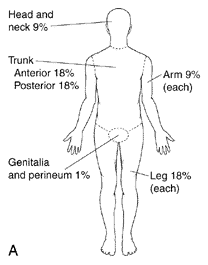The neutron bomb as the most moral weapon possible
From Charles Platt’s “The Profits of Fear” (August 2005):
Sam Cohen might have remained relatively unknown, troubled by ethical lapses in government and the military but unable to do anything about them, if he had not visited Seoul in 1951, during the Korean war. In the aftermath of bombing sorties he witnessed scenes of intolerable devastation. Civilians wandered like zombies through the ruins of a city in which all services had ceased. Children were drinking water from gutters that were being used as sewers. “I’d seen countless pictures of Hiroshima by then,” Cohen recalls, “and what I saw in Seoul was precious little different. . . . The question I asked of myself was something like: If we’re going to go on fighting these damned fool wars in the future, shelling and bombing cities to smithereens and wrecking the lives of their surviving inhabitants, might there be some kind of nuclear weapon that could avoid all this?”
Here was a singularly odd idea: To re-engineer the most inhumane and destructive weapon of all time, so that it would _reduce_ human suffering. Cohen’s unique achievement was to prove that this could in fact be done.
His first requirement was that wars should be fought as they had been historically, confining their damage to military combatants while towns and cities remained undamaged and their civilian inhabitants remained unscathed. …
Ideally he wanted to reduce blast damage to zero, to eliminate the wholesale demolition of civilian housing, services, and amenities that he had witnessed in Seoul. He saw a way to achieve this if a fusion reaction released almost all of its energy as radiation. Moreover, if this radiation consisted of neutrons, which carry no charge, it would not poison the environment with residual radioactivity.
The bomb would still kill people–but this was the purpose of all weapons. _If_ wars were liable to recur (which Cohen thought was probable), soldiers were going to use weapons of some kind against each other, and everyone would benefit if the weapons minimized pain and suffering while ending the conflict as rapidly as possible.
Cohen came up with a design for a warhead about one-tenth as powerful as the atomic bombs dropped on Japan. If it was detonated at 3,000 feet above ground level, its blast effects would be negligible while its neutron radiation would be powerful enough to cause death within a circle about one mile in diameter. This was the battlefield weapon that came to be known as the neutron bomb.
Such a weapon obviously would be more civilized than large-scale hydrogen bombs, and would also be more humane than conventional bombs, because it would create an all-or-nothing, live-or-die scenario in which no one would be wounded. A stream of neutrons cannot maim people. It will not burn their flesh, spill their blood, or break their bones. Those who receive a non-lethal dose will recover after a period of intense nausea and diarrhea, and Cohen estimated that their risk of subsequent cancer would be no greater than the risk we experience as a result of exposure to second-hand cigarette smoke. As for the rest, death would come relatively quickly, primarily from shock to the central nervous system. As he put it in his typically candid style, “I doubt whether the agony an irradiated soldier goes through in the process of dying is any worse than that produced by having your body charred to a crisp by napalm, your guts being ripped apart by shrapnel, your lungs blown in by concussion weapons, and all those other sweet things that happen when conventional weapons (which are preferred and anointed by our official policy) are used.”
After assessing every aspect and implication of his concept, he reached his modest conclusion: “The neutron bomb has to be the most moral weapon ever invented.”
The neutron bomb as the most moral weapon possible Read More »
 In the 1950s, doctors developed an easy way to estimate the ratio of the area of a patient’s burns to the total area of his skin. The system works by assigning standard percentages to major body parts. (Most of these happen to be multiples of nine.) The skin on each arm, for example, covers 9 percent of a patient’s total surface area. Each leg comprises 18 percent, as do the front and back of the torso. The head and neck together make up another 9 percent, and the last bit (or 1 percent) covers the genitalia and perineum. This breakdown makes it easy for doctors to estimate the size of a burn in relation to a body—a burn that covered half the arm would add 4 or 5 percent to the total figure. …
In the 1950s, doctors developed an easy way to estimate the ratio of the area of a patient’s burns to the total area of his skin. The system works by assigning standard percentages to major body parts. (Most of these happen to be multiples of nine.) The skin on each arm, for example, covers 9 percent of a patient’s total surface area. Each leg comprises 18 percent, as do the front and back of the torso. The head and neck together make up another 9 percent, and the last bit (or 1 percent) covers the genitalia and perineum. This breakdown makes it easy for doctors to estimate the size of a burn in relation to a body—a burn that covered half the arm would add 4 or 5 percent to the total figure. …